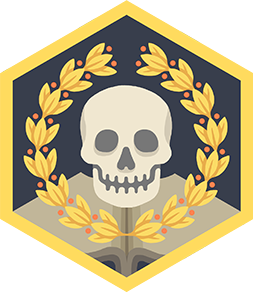Visit a Museum
Visit a museum, explore exhibits, complete a simple scavenger hunt, sketch favorite artifacts, and ask questions to learn about history, science, or art.



Step-by-step guide to visit a museum
What Are The Interactive Exhibits Like At A Science Museum? - The Family Getaway Guide
Step 1
Gather your sketchbook pencil eraser and coloring materials and put them in your small bag.
Step 2
Put on comfortable shoes for walking around the museum.
Step 3
Go to the museum with your adult helper and enter the building.
Step 4
Pick up a museum map at the welcome desk or information area.
Step 5
Make a simple scavenger hunt list of five things to find using the map such as an animal artifact a painting a tool a fossil or a weird object.
Step 6
Choose the first exhibit from your scavenger list and walk to that exhibit.
Step 7
Search the exhibit carefully for the first item on your scavenger list.
Step 8
Check off the item on your scavenger list when you find it.
Step 9
Write the exhibit name and one short note about where you saw the item in your sketchbook.
Step 10
Sit where it is allowed and sketch your favorite artifact for at least five minutes.
Step 11
Ask a staff member docent or guide one question about something you want to learn.
Step 12
Write the answer to the question and two facts you learned in your sketchbook.
Step 13
Add color and labels to your sketch to show important details.
Step 14
Make a final page with small sketches and a sentence about your three favorite finds.
Step 15
Share your finished museum sketchbook and scavenger notes on DIY.org.
Final steps
You're almost there! Complete all the steps, bring your creation to life, post it, and conquer the challenge!


Help!?
What can we use if we don't have a sketchbook, eraser, or coloring materials?
Substitute a few stapled sheets of plain paper for the sketchbook, use a ballpoint pen or pencil without an eraser for lines, and pack crayons or a single marker in your small bag so you can still complete 'Gather your sketchbook pencil eraser and coloring materials' and 'sit where it is allowed and sketch your favorite artifact for at least five minutes.'
What should we do if we can't find an item from our scavenger hunt?
If you can't find an item on your scavenger list, use the museum map or ask a staff member where that exhibit is, then either swap the item for a similar artifact and check it off or note the change in your sketchbook when you 'Write the exhibit name and one short note about where you saw the item.'
How can I adapt the activity for younger or older children?
For younger kids, shorten 'Make a simple scavenger hunt list of five things' to three easy items, reduce the sketch time from 'at least five minutes' to two minutes with adult help, and for older kids increase to ten items, sketch for 15 minutes, and add extra research notes when you 'Write the answer to the question and two facts you learned in your sketchbook.'
How can we make the sketchbook project more creative or personal?
Enhance 'Add color and labels to your sketch' and 'Make a final page with small sketches and a sentence about your three favorite finds' by photographing artifacts (if allowed), attaching a ticket stub, writing why each piece mattered, and then sharing the personalized pages on DIY.org as suggested in the final step.
Watch videos on how to visit a museum
Exploring The Louvre Museum - Virtual Field Trip for Kids!
Facts about museums and museum visits
✏️ Many museums welcome sketching and even host special sketch programs so kids can draw artifacts up close with a pencil and sketchbook.
🦕 Natural history museums display fossils and skeletons that can be tens of millions of years old — real-life time machines!
🕵️ Scavenger hunts are a classic museum activity — they turn exploring exhibits into a fun detective game and help you notice tiny details.
🎨 The Louvre, one of the world's most famous museums, is home to the Mona Lisa and attracts millions of visitors each year.
🏛️ The word "museum" comes from the ancient Greek 'Mouseion' — a place dedicated to the Muses (art, learning, and inspiration)!
How do I plan a museum visit with my child and complete the scavenger hunt?
What materials do I need for a museum scavenger hunt and sketching?
What ages is a museum scavenger hunt and sketching activity suitable for?
What are the benefits of visiting a museum with a scavenger hunt?


One subscription, many ways to play and learn.
Only $6.99 after trial. No credit card required



